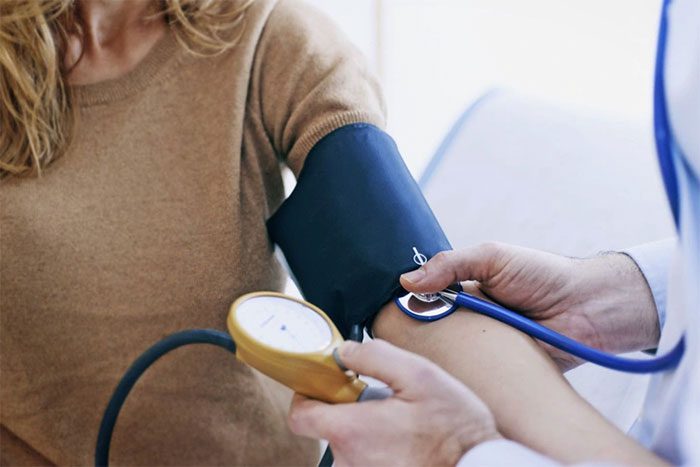New Research Shows Millions of People with Normal Blood Pressure Misclassified as Hypertensive.
According to guidelines from the American Heart Association (AHA) and the American College of Cardiology, when measuring blood pressure, patients should sit in a chair with their feet flat on the floor, back straight, and arm at heart level with the blood pressure cuff. This practice ensures the accuracy of the readings.
However, many healthcare professionals have measured blood pressure with patients sitting on examination tables, feet dangling, while their backs and arms are unsupported.

Incorrect posture when measuring blood pressure leads to inaccurate results – (Photo: VERYWELL HEALTH)
“This is not conducive to accurate blood pressure measurement,” said Dr. Randy Wexler, a primary care physician at the Wexner Medical Center at The Ohio State University.
His research was presented at the AHA scientific conference in Philadelphia on November 11.
Dr. Wexler noted that being misclassified as having high blood pressure (hypertension) can result in “unnecessary treatment.” He explained that individuals may not need to take as many medications, as drugs often come with side effects. Therefore, accurate blood pressure measurement is crucial.
The study found that millions of Americans have had their blood pressure measured incorrectly.
It is estimated that nearly half of adults in the U.S. have high blood pressure. A person is diagnosed with hypertension when their readings consistently reach or exceed 130 mmHg systolic or 80 mmHg diastolic.
Dr. Jordana Cohen, a nephrologist at Penn Medicine in Philadelphia who was not involved in the study, stated that those who are prescribed antihypertensive medications when they do not need them risk having their blood pressure lowered too much, a condition known as hypotension. Low blood pressure can cause dizziness, lightheadedness, fainting, and may lead to falls.
Dr. Cohen, who is also an associate professor of medicine at the University of Pennsylvania, emphasized: “Healthcare systems need to prioritize accurate blood pressure measurement. Doing so will lead to better health outcomes for patients and is a smart economic strategy.”


















































